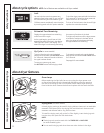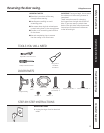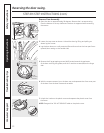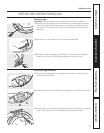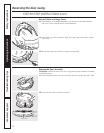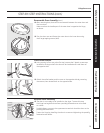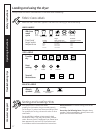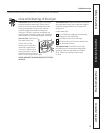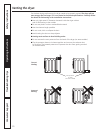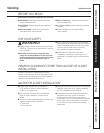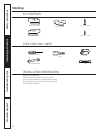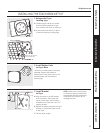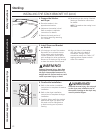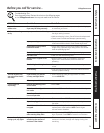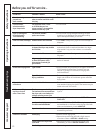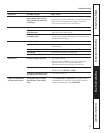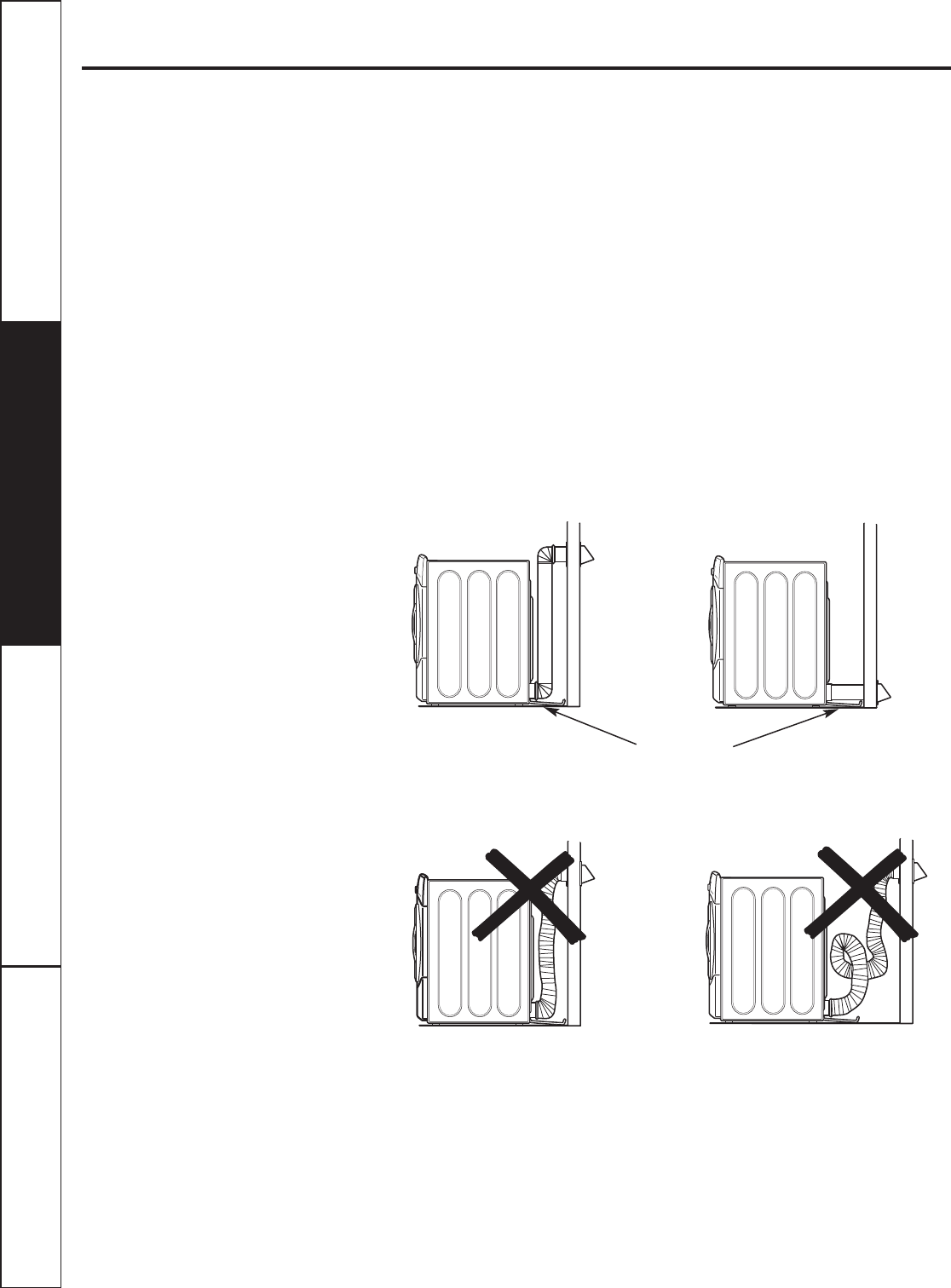
19
;>>1/@
(1:@5:3
:/;>>1/@
(1:@5:3
For the best drying performance, the dryer needs to be properly vented. &410>E1>C588A?1
9;>11:1>3E-:0>A:8;:31>525@5?:;@B1:@10@;@41.18;C?<1/525/-@5;:?->12A88E2;88;C
@4101@-58?;:D4-A?@5:35:@41:?@-88-@5;::?@>A/@5;:?
n Use only rigid metal 4″ diameter ductwork inside the dryer cabinet
and for exhausting to the outside.
n Do not use plastic or other combustible ductwork.
n Use the shortest length possible.
n Do not crush, kink or collapse the duct.
n Avoid resting the duct on sharp objects.
n (1:@5:39A?@/;:2;>9@;8;/-8.A5805:3/;01?
n Do not remove the vent protector from the back of the dryer (on some models).
n Flip the protector down to its lowest position and connect the exhaust duct
to the dryer. The lowered protector will prevent the duct from getting crushed
(on some models).
(1:@5:3@410>E1>
"<1>-@5:3:?@>A/@5;:?
%-21@E:?@>A/@5;:?
;:?A91>%A<<;>@ &>;A.81?4;;@5:3&5<?
Vent protector
in place
(on some models)



